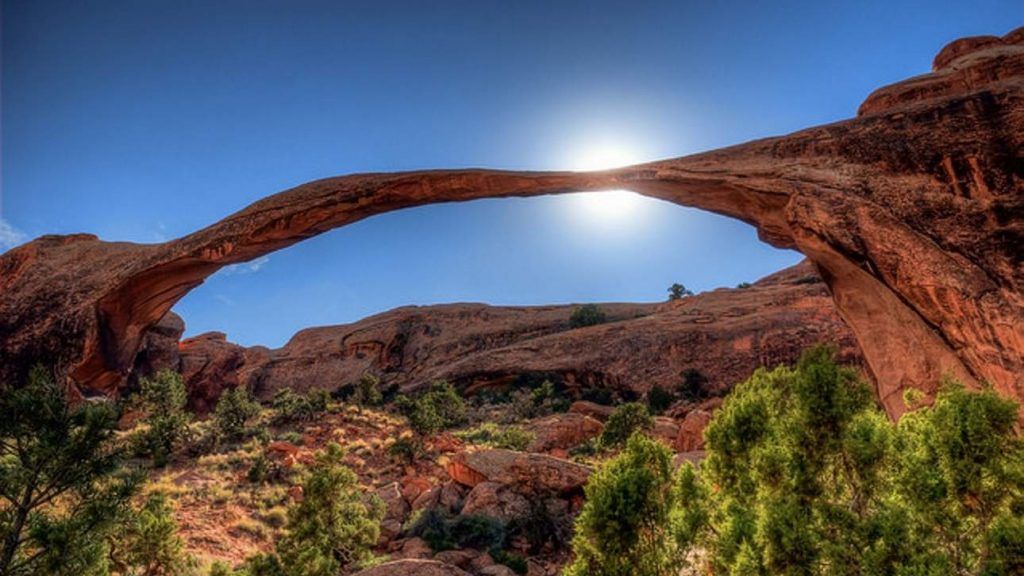US public lands: An overlooked piece of the climate solution
By Jamie Williams | January 15, 2019
 The red rock region of public lands in Utah. Photo Credit: Wayne Stadler, Creative Commons.
The red rock region of public lands in Utah. Photo Credit: Wayne Stadler, Creative Commons.
Editor’s note: This story was originally published by High Country News. It appears here as part of the Climate Desk collaboration.
Despite the willful denunciation of proven climate science by the White House and some members of Congress, there is a hopeful awakening in the United States: Young activists are stepping forward to demand a Green New Deal that guarantees climate action, justice and economic security for all.
It is not a single law, but rather a collection of policies that embody many of the actions needed to expand clean energy, grow job opportunities, reduce climate pollution, improve air and water quality, and enhance the resilience of communities
In any plan to help us transition from an economy built on fossil fuels to one driven by clean energy, our public lands should feature prominently.
We need a climate plan for public lands that will manage a phase-down of fossil fuel leasing and production in line with current climate science. At the same time, we must support those communities most affected by pollution and boom-and-bust energy cycles as they transition to the energy of the future.
Climate change is the largest and most misunderstood problem humanity will ever face. There is no previous situation to compare it to, no successful historical model to reference — and that just makes the issue even riper for the critics who claim it simply doesn’t exist.
During the 24th international climate conference, newly released information confirmed that we are facing a slow-motion global catastrophe. According to a battery of scientific reports from thousands of the world’s foremost experts, we are closer than expected to warming levels that would result in severe, perhaps irrevocable, changes in natural systems.
Winters are shorter, summers hotter and drier; our fishing streams run warmer and ski slopes stay bare. Coral reefs are dying, and glaciers are disappearing from Glacier National Park. Life forms on this planet — from pollinators to polar bears — are struggling to create another generation. Closer to home, some human communities are burning to the ground while others are deluged in floods.
We already have the knowledge to avert the worst of these effects, but we lack the collective will to do so. Politicians in the Trump era are normalizing negligence every time they dismiss scientific consensus by uttering, “I don’t believe it.”
Interior Secretary Ryan Zinke’s tenure is a microcosm of this denial: He spent 21 months in blind pursuit of “energy dominance,” a doctrine that enshrines oil, gas and coal production as the highest use of America’s public lands, regardless of the climate pollution they cause.
Fossil energy extraction is the preferred tenant on America’s public lands. For less than the price of a cup of coffee, developers can purchase and lock up America’s favorite outdoor recreation areas and wildlife habitat for years so that oil developers and mining companies have sole access.
That dirty secret means that public lands are a major source of the nation’s climate emissions problem. In fact, if our public lands were their own country, its emissions would rank fifth in the world, according to data released from the Trump administration last month.
We should utilize our already-degraded lands to drive geothermal, wind and solar energy, working in cooperation with local communities while safeguarding our wildlife and wilderness-quality lands. Our elected leaders must eliminate the subsidies and regulatory loopholes that prop up ailing coal, oil and gas producers and permit needless methane waste and other pollution.
We must protect our public lands in large, connected blocks that span the continent to help wildlife species and entire ecosystems adapt to a warming world.
And we should support a just transition to a clean, sustainable economy that puts people to work in jobs that conserve and restore our public lands, including building trails, restoring wetlands and other wildlife habitat and improving facilities at our parks and monuments.
Let’s reimagine the role we want our public lands to play at this pivotal time in history. We all have a say in how our greatest natural legacy is handed down to the next generation.
Over a century ago, early visionaries had the forethought to create America’s vast system of public lands. Now, more than ever, we need the same courageous thinking to address the most pressing challenge of our time.
Together, we make the world safer.
The Bulletin elevates expert voices above the noise. But as an independent nonprofit organization, our operations depend on the support of readers like you. Help us continue to deliver quality journalism that holds leaders accountable. Your support of our work at any level is important. In return, we promise our coverage will be understandable, influential, vigilant, solution-oriented, and fair-minded. Together we can make a difference.
Topics: Climate Change, Opinion















